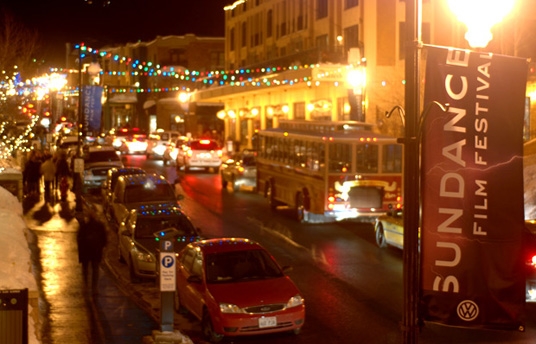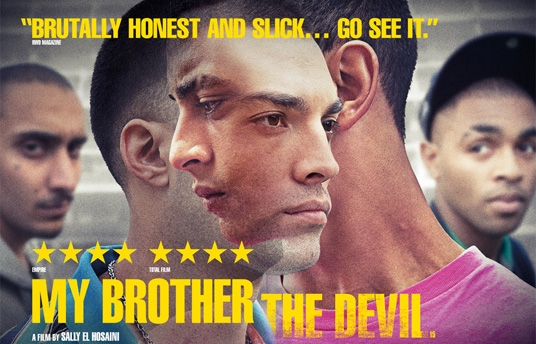Sundance Film Festival - A Primer
Jan 17, 2013

The Sundance Film Festival is tucked away in the hills of Park City, Utah and has played host to some of the greatest films of the last forty years. Cult and classic films like Tarantino’s ‘Reservoir Dogs’, Rodriguez’s ‘el Mariachi’, Kevin Smith’s ‘Clerks’ and Shari Springer Berman and Robert Pulcini’s ‘American Splendor’ found their legs at Sundance and went on to garner greater box office acclaim. The original impetus of the festival was to focus filmmaking attention on Utah and independent films, and as the festival gained notoriety, more and more film enthusiasts found their way to this small, but filmic town.
Reservoir Dogs - Trailer
The inaugural film showcase in 1978 featured all American titles, which were part of a retrospective of the nation’s filmmaking, augmented with panel discussions and awards. In the following year, the festival expanded its offerings with over 60 film screenings, diverse panel discussions and the involvement of many well-known Hollywood directors. In 1980, Sundance moved from the heat of the summer to the snow swept landscape of winter, offering screenings and skiing – differentiating the festival and solidifying its unique identity. Part of the festival’s success and growth was linked to the involvement of inaugural chairman Robert Redford, who used his celebrity to help the festival gain more attention from studios and those searching for unique screening venues. Since the festival’s inception it has been renamed numerous times, yet the vision of cultivating a dynamic environment for evolving voices in American film has remained a constant.
Many Arab Filmmakers have gained exposure at Sundance, using the festival’s international appeal to secure distribution in diverse markets. Amin Matalqa’s drama ‘Captain Abu Raed’, screened at Sundance in 2008, representing the first feature film out of Jordan in decades. Matalqa’s film won the World Cinema Audience Award and helped pave the way for Arabic-language pictures gaining wider distribution. It seems that every edition of the festival over the past few years has featured an element of Arab storytelling. Sally El Hosaini’s film ‘My Brother the Devil’ was also part of the recent Sundance line-up, capturing the perspective of young Arabs caught in the streets of a gang infested London.

Sally El Hosaini’s film 'My Brother the Devil'
Closely linked to the festival is the Sundance Institute, which is an internationally-recognised nonprofit organisation that elevates the work of filmmakers who are pushing the boundaries of contemporary storytelling. A unique part of the institute is providing a creative space for artists where they can explore the breadth of their filmic style free from political pressures. The first ten filmmakers were invited to the mountains of Utah in 1981, where they worked with leading writers and directors to develop and refine the scope of their projects. This unique creative environment has set the tone for creative platforms in the United States and around the world. Since its inception, the institute has supported more than 300 films including titles such as ‘Howl’, ‘Amreeka’ and ‘Central Station’. The various arms of the Institute have expanded to incorporate everything from Native American Programming, to supporting composers and community focused intiatives and screenings.
video#3
The Sundance Institute Documentary Film Program (DFP) has also collaborated with Arab Fund for Arts and Culture (AFAC) to create The Arab Fund Documentary Film Program in order to perpetuate authentic and compelling stories from the Arab world. To date, the DFP has advised various rounds of funding, totaling over $1 million, and designed and implemented workshops for grantees in the Arab World.
In 2011, Sundance left the United States for the first time as Robert Redford announced that Sundance would be held at the O2 in London. Transposing the unique environment of the Sundance Labs and festival to a completely new environment is a huge challenge, as much of the festival’s identity is rooted in the hills of Utah, however by scaling down the festival’s activities this unique immigration of film was made possible. One element that is special about Sundance is the fact that the festival’s leadership is always looking ahead and striving to integrate new audiences and incorporate cross-media collaboration. The musical festival that runs alongside the film screenings is a great example of this hybridity and dynamism, successfully blending genres to create a truly compelling festival experience.
Captain Abu Raed - Trailer
إعلان فيلم كابتن أبو رائد
Part of the uniqueness of Sundance is that it opens the festival season each January and sets the tone for all preceding festivals. In 2012, an estimated 46,731 people attended the festival to gain access to the compelling slate of films that Sundance has become known for. With over 10,000 film submissions each year, programmers are tasked with finding quality and entertaining narratives for Sundance’s growing audiences. Many of the award-winning films have acquired distribution and this amount has steadily increased. From 1985 to 1990, there were a total of 42 films that won Sundance awards and 14 (33%) of them were acquired for distribution. From 1999 to 2008 there have been 124 films that won Sundance awards and 84 (68%) of which were acquired for distribution. The distribution of films at Sundance has doubled providing the exposure and wider audiences needed to create a profitable and successful film.

DFI co-financed film ‘May In the Summer’ by Cherien Dabis
The Sundance Film Festival has become a household name and their collaborations often signify a quality and compelling film watching experience. This year the festival is once again in top form, offering unique screenings including DFI co-financed film ‘May In the Summer’ by Cherien Dabis. Whether you’re in Utah or even if you’re not, the festival is going to be streaming live content allowing audiences from around the world to experience some of the renowned Sundance experience, minus the snow of course.